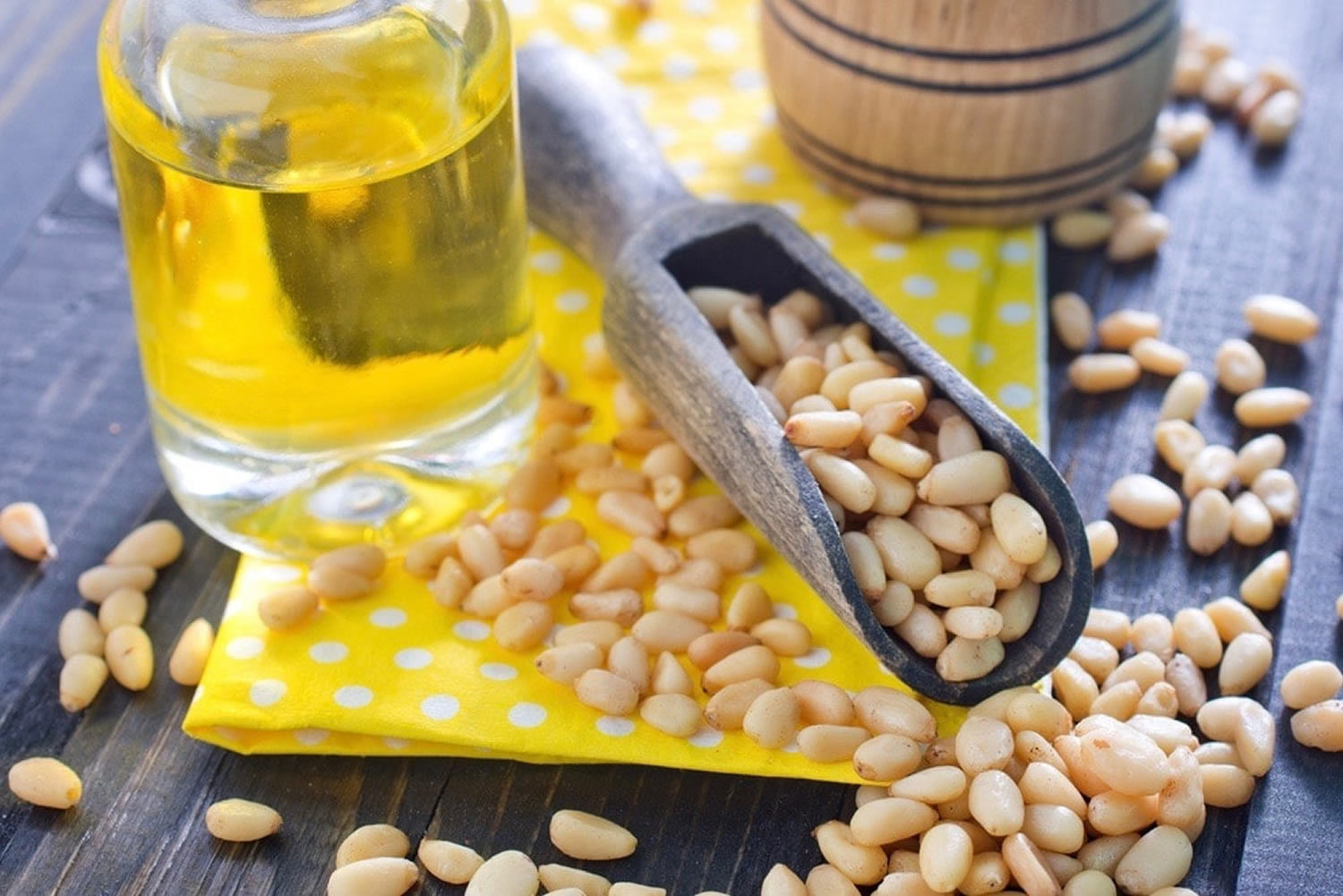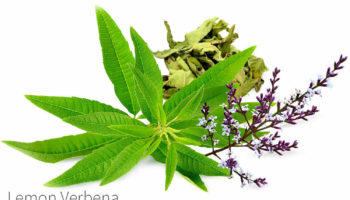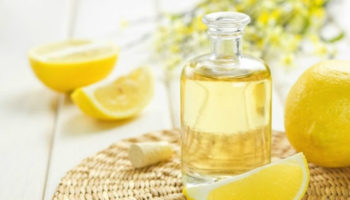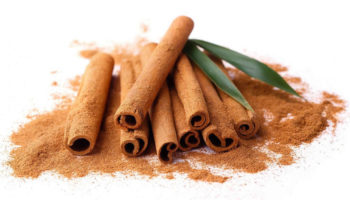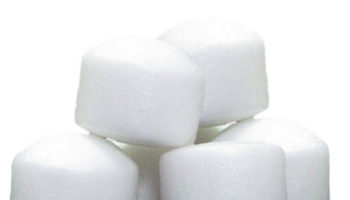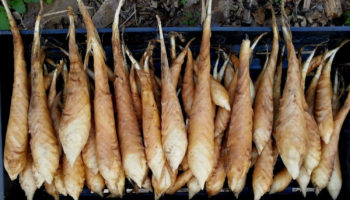What is pine nut oil
Pine nut oil, also called pine seed oil or cedar nut oil, is a vegetable oil, extracted from the edible seeds of several species of pine. While the pine oil produced from the seeds of more common European [Pinus pinea, Pinus pinaster, Pinus cembra, Pinus mughus, Pinus nigra] and American pine [Pinus monophylla, Pinus cembroides] varieties is mostly used for culinary purposes 1, Siberian pines [Pinus sibirica, Pinus griffithii, Pinus sylvestris] (growing in Russia, Mongolia and Kazakhstan), as well as Korean pines [Pinus koraiensis] (growing mostly in China and North Korea) yield the seeds with the highest content of pinolenic acid, as well as antioxidants associated with medicinal uses 2. Approximately 29 species of Pinus produce seeds, which have been used as a food item, at least by indigenous tribal cultures. Most of the edible nut bearing pines are haploxylon (soft) pines although several species are of the diploxylon (hard) pine group (Tables 1 and 2). The greatest number of pine species which bear edible nuts are found in North America, the largest group being the piñon pines of northern Mexico and south-western United States. These are a complex and highly variable group of small to medium sized trees that occur in localities with a semi-arid climate. About 13 species of piñon pines are known (Table 2). In Asia and the Near East, Pinus gerardiana, P. koraiensis , P. pumila and P. sibirica are important pine nut producing species. The nuts of Pinus sibirica and Pinus koraiensis are pressed commercially for the production of cooking oil. Pine nuts are rich in oil (31–68% by weight) and contain several unusual polymethylene-interrupted unsaturated fatty acids with a cis-5 ethylenic bond. These are the cis-5, cis-9 18:2; cis-5,cis-9,cis-12 18:3; cis-5,cis-11 20:2, and cis-5,cis-11,cis-14 20:3 acids, with a trace of cis-5,cis-9,cis-12,cis-15 18:4 acid. Their percentage relative to total fatty acids varies from a low of 3.1% (Pinus pinea) to a high of 30.3% (Pinus sylvestris), depending on the species. The major cis-5 double bond-containing acid is generally the cis-5,cis-9,cis-12 18:3 acid (pinolenic acid). In all species, linoleic acid represents approximately one-half the total fatty acids, whereas the content of oleic acid varies in the range 14–36% inversely to the sum of fatty acids containing a cis-5 ethylenic bond. Pinus koraiensis, a native plant of eastern Asia and commonly called the Korean pine nut, is one of the main types of commercial pine nuts. Pine nuts contain fatty acids with an unusual structure, e.g., Δ5-unsaturated polymethylene-interrupted fatty acids (delta5-UPIFAs) 2. These fatty acids are the characteristic components of lipids obtained from conifer seeds and leaves 3. Pinolenic acid (18:3, Δ5,9,12) is a major delta5-UPIFA present in pine nuts. Pinolenic acid (18:3, Δ5, 9, 12), which is an unusual omega-6 polyunsaturated fatty acids (PUFA) characterized by polymethylene-interrupted double bonds. The Korean pine (Pinus koraiensis) nuts have been used in Asia for various dishes. Lipid content of the Korean pine nut comprises 62% of the total weight of the nut 4. The oil extracted from Korean pine nuts, also known as Korean pine nut oil, consists of 66% polyunsaturated fatty acids (PUFAs; 45% linoleic acid [C18:2, Δ9,12], 27% oleic acid [18:1, Δ9] and 15% pinolenic acid [C18:3]), 26% monounsaturated fatty acids (MUFAs; oleic acid [C18:1]), 5% palmitic acid (16:0), 2% stearic acid (18:0), 1% eicosenoic acid (20:1, Δ11) and 3% other Δ5-unsaturated polymethylene-interrupted fatty acids (delta5-UPIFAs) 3, 5.
Table 1. Pine species with edible nuts
| Haploxylon (soft) pines | ||
| P. ayacahuite P. albicaulis P. cembra P. flexilis P. gerardiana P. koraiensis P. lambertianaP. monticola Piñon pines | Mexico, Central America Western Canada and United States Europe (Alps and Carpathian Mountains) Western Canada and United States E Afghanistan, Pakistan, N India E China, Japan, Korea, SE Siberia Western United States (California, Oregon) NW United States and adjoining Canada N Mexico, SW United StatesE Siberia, E China, Korea, N Japan Russia (Central Siberia), Mongolia N Mexico, SW United States | Traditional food for indigenous tribes Traditional food for indigenous tribes Locally important Traditional food for indigenous tribes Important in international trade Important in international trade Traditional food for indigenous tribes Traditional food for indigenous tribes A complex group of about 13 species. Many are important food sources (See Table 2) Locally important Nuts are ground into cooking oil Traditional food for indigenous tribes |
| Diploxylon (hard) pines | ||
| P. coulteri P. pinea P. ponderosa P. sabiniana P. roxburghii P. torreyana | United States (California) Mediterranean Europe and Near East W Canada and United States United States (California) India United States (California) | Traditional food for indigenous tribes Important in international trade Traditional food for indigenous tribes Traditional food for indigenous tribes Traditional food source Traditional food for indigenous tribes |
Table 2. The pines of Mexico and the United States
| P. catarinae | Mexico – Nuevo León | Seeds collected locally for food |
| P. cembroides | Mexico – Northern Sonora and Chihuahua south to Puebla | Nuts have very thick shells, sold in markets in Mexico |
| P. culminicola | Mexico – Nuevo León | |
| P. discolor | Mexico – E Sonora, Chihuahua, Durango, San Luis Potosi USA – S Arizona, S New Mexico | Not sought after by humans because seed crops are generally small and seed coat is very hard |
| P. edulis | USA – Arizona, Colorado, New Mexico Mexico – NW Chihuahua | Important producer of pine nuts |
| P. quadrifolia | Mexico – Baja California Norte USA – S California | Locally important. Nuts have very thin seed coats |
| P. juarezensis | Mexico – Baja California Norte USA – Extreme S California | Seeds sold in markets along with seeds of P.edulis and P. monophylla |
| P. johannis | Mexico – Localized in Coahuila, N Zacatecas, S. Nuevo León | Seeds edible |
| P. lagunae | Mexico – Found only in a single restricted area in Baja California Sur | |
| P. maximartinezii | Mexico – Isolated in the mountains of S Zacatecas, extremely rare | Large seeds; 20-25 mm long, unusually large, heavy cones |
| P. monophylla | Mexico – Baja California Norte USA – S California, Nevada, W Utah | Important producer of nuts. Only pine in the world with a single needle per fascicle |
| P. nelsonii | Mexico – Nuevo León, Tamaulipas, San Luis Potosi | Seeds collected with P. cembroides. Superior in flavour to P. cembroides |
| P. pinceana | Mexico – Coahuila, Hidalgo, Querétera, Zacatecas | Seeds collected for food |
| P. remota | Mexico – Chihuahua, Coahuila USA – W Texas | Common name is “papershell piñon.” Thin seed coat makes them especially attractive for human consumption |
Table 3. Fatty acid composition of different the lipid sources
| Fatty acids | Lard | Sunflower | Pinus pinaster |
| g/100 total fat | |||
| Saturated | |||
| 16:0 | 24.0 | 6.0 | 3.6 |
| 17:0 | 0.1 | 0.1 | 0.1 |
| 18:0 | 15.5 | 5.2 | 2.4 |
| Monounsaturated | |||
| 16:1 | 2.6 | 0.3 | 0.2 |
| 18:1 | 43.2 | 20.4 | 18.1 |
| 11- 20:1 | 0.7 | 0.8 | 1.0 |
| Polyunsaturated | |||
| 9,12- 18:2 | 11.6 | 64.1 | 55.9 |
| 9,12,15- 18:3 | 0.8 | 0.5 | 1.3 |
| 11,14- 20:2 | n.d.1 | n.d. | 0.8 |
| Δ5 olefinic acids | |||
| 5,9- 18:2 | n.d. | n.d. | 0.7 |
| 5,9,12- 18:3 | n.d. | n.d. | 7.1 |
| 5,11- 20:2 | n.d. | n.d. | 0.8 |
| 5,11,14- 20:3 | n.d. | n.d. | 7.1 |
| Others | 1.5 | 2.6 | 0.9 |
Pine oil uses and benefits
The health benefits of pine nut oil have been investigated in several studies. Asset et al. 8, 9 reported that pine nut oil consumption lowered the total cholesterol and triglyceride levels when compared with the consumption of other lipids such as sunflower oil, coconut oil, or lard in mice. In a study by Sugano et al. 10, consumption of pine nut oil (22% energy) alleviated high blood pressure in spontaneously hypertensive rats after five weeks of feeding. Hughes et al. 11 showed that providing a pine nut oil capsule prior to an ad libitum buffet lunch resulted in reduced food intake in overweight female subjects. Pasman et al. 12 observed that cholecystokinin (CCK-8) and glucagon-like peptide-I secretion were higher in subjects who received a pine nut oil capsule than in those who received a placebo, thereby supporting the findings by Hughes et al. 11. Pine nut oil administration to overweight postmenopausal women has reported to produce a significant increase of cholecystokinin (CCK-8) and glucagon like peptide-1 (GLP-1) 12. Cholecystokinin (CCK-8) that is released from duodenal enteroendocrine cells into the blood stream in response to fatty acids or protein 13. Cholecystokinin (CCK-8) suppresses appetite, and higher concentrations of CCK-8 produce larger appetite-suppressing events 14. Other hormones that are important are glucagon like peptide-1 (GLP-1), peptide YY (PYY) and ghrelin 15. GLP-1 and PYY are both produced in the ileum, induced by passing fatty acids and carbohydrates. Higher concentrations decrease appetite 15. However, unlike the appetite suppressing results of previous study by Hughes et al. 11, a more recent study involving 39 healthy women aged 18-45 y with a BMI of 23-30 kg/m2 who took 3 g or 6 gram “PinnoThin” Korean pine nuts oil compared to placebo milk fat 16 no appetite suppressing effect of “PinnoThin” Korean pine nuts oil was found.
Dietary fatty acids, especially polyunsaturated fatty acids (PUFAs), play a major role in regulating immune function by modulating the production of lipid mediators involved in a variety of signaling pathways. In general, omega-6 polyunsaturated fatty acids (PUFAs) are known to promote hyperactive immune responses by providing substrates for proinflammatory lipid mediators; whereas consumption of omega-3 polyunsaturated fatty acids (PUFAs) results in the alleviation of proinflammatory responses 17. However, γ-linolenic acid [Gamma-linolenic acid or GLA] (18:3, Δ6,9,12), which is an omega-6 PUFA, was reported to suppress chronic inflammation by increasing the cellular levels of dihomo-γ-linolenic acid (20:3, Δ8,11,14) 18. Dihomo-γ-linolenic acid can compete with arachidonic acid (20:4, Δ5,8,11,14) as a substrate for cyclooxygenase and lipoxygenase.
Pinolenic acid, which is the positional isomer of γ-linolenic acid [Gamma-linolenic acid or GLA], can also be taken up and elongated to form eicosatrienoic acid (20:3, Δ7,11,14) 19. Chuang et al. 20 reported that pinolenic acid, taken up by cells, modified the fatty acid composition of cellular phospholipids, resulting in a decreased production of proinflammatory eicosanoids in the murine macrophage cell line. In contrast to the in test tube results, the production of proinflammatory lipid mediators was elevated in animals that were fed with pine nut oil 21. In a study that examined the effects of a five-week pine nut oil diet (22% energy) on immune parameters 21, the relative proportion of splenic CD4+ T lymphocytes, the splenic production of immunoglobulin G and E, and the leukotriene B4 released from peritoneal exudate cells were higher in rats that were fed with pine nut oil compared with those fed with safflower oil (a source of linoleic acid; n-6, 18:2, Δ9,12) or evening primrose oil (a source of γ-linolenic acid; n-6, 18:3, Δ6,9,12). Therefore, pinolenic acid has the potential to modulate the immune response via a mechanism that may be different from that of other omega-6 PUFAs in vivo. However, information regarding the effect of pine nut oil on immune function is limited.
Obesity has been associated with impaired immune function. It was reported that obese patients had an increased risk of infection 22 and poor antibody response to vaccination 23. It was suggested that altered levels of circulating hormones and nutrients, such as glucose and lipids, might contribute to dysregulation of the immune cells 24. Several studies showed that adequate weight reduction could correct the altered immune response 25, which suggests that immune response could be improved by weight reduction in obese subjects.
Pine nut oil has been reported to have favorable effects on lipid metabolism in rats 26, blood pressurein rats 27, appetite control 28, and eicosanoid production 20. A study by Ferramosca et al. 29 showed that pine nut oil consumption led to less weight gain in mice that were fed with a 29% energy fat diet containing pine nut oil (17% energy). In another study by Ferramosca et al. 30, it was shown that the combination of conjugated linoleic acid and pine-nut-oil prevented a conjugated linoleic acid-induced fatty liver and improved insulin sensitivity in mice.
This study 31, showed that hepatic triacylglycerol accumulation was attenuated by pine nut oil replacement in high-fat diet-fed mice. Mice in the high-fat diet group with 45% of the energy from fat with 35% from lard and 10% from soy bean oil showed 30% higher hepatic triacylglycerol concentrations compared to the control group (10% of the energy from fat from pine nut oil or soy bean oil), but mice in the high-fat diet group with 45% of the energy from fat with 35% from lard and 10% pine nut oil group maintained hepatic triacylglycerol concentrations at the level of lean mice. Non-alcoholic fatty liver disease (NAFLD) induced by feeding the mice a high-fat diet (45% of the energy from fat) for 12 weeks in this study seemed to remain in the initial stage of a simple steatotic condition. A hepatic triacylglycerol content over 5% of the liver weight, which is the criteria for a fatty liver 32, was not observed overall. On pathological observation, inflammation and hepatocyte degeneration were mild even in the mice in the high-fat diet group with 45% of the energy from fat with 35% from lard and 10% from soy bean oil. Meanwhile, the hepatic cholesterol level was lower in high-fat diet-fed mice, and pine nut oil had no effect on the hepatic cholesterol level. In another study by the same authors 2, showed that the consumption of high-fat diet, partially substituted with pine nut oil for 12 weeks, led to reduced weight gain, which was mainly due to less white adipose tissue in the mice. However, splenocyte production of IL-1β was significantly higher in mice that were fed with pine nut oil than in mice fed with soy bean oil. IL-1β is a proinflammatory cytokine that facilitates T cell proliferation and activation 33. In another study by Matsuo et al. 21, consumption of pine nut oil (22% kcal) for five weeks resulted in higher leukotriene B4 release from rat peritoneal exudate cells when compared with other oil groups. These results suggest that pine nut oil might have an immune-activating effect by facilitating the inflammatory response, the importance of which will require further study and whether pine nut oil affects the production of other inflammatory markers also.
Earlier studies in rats showed that maritime pine seed oil 34 lowers triglycerides, VLDL-triglycerides and VLDL-cholesterol compared to a diet enriched in oleic acid 35. The latter findings indicated that pine seed oil may be useful in lipid-lowering diets. In another animal study to assess the lipid-lowering and antiatherogenic properties of pine seed oil in apolipoprotein E-deficient mice 7, it was found pine oil feeding had no significant preventive effect on atherosclerosis lesion formation in the apo E-deficient mice compared to lard or sunflower. These data indicate that pine oil does not protect against atherosclerosis in the absence of apolipoprotein E. In contrast, triglycerides and VLDL + IDL-triglycerides levels were higher in mice fed pine oil than sunflower oil or lard.
Pine essential oil
Pine needle, bark, and cone essential oils of Pinus roxburghii were obtained in 0.053%, 0.001%, and 0.012%, respectively 36. Chemical compositions of Pinus roxburghii cone, needle, and bark essential oils revealed a total of 117 components, of which 111 were identified. A total of 95.5% of the pine cone essential oil of Pinus roxburghii was identified with major components being (E)-caryophyllene (26.8%), terpinen-4-ol (16.2%), with smaller amounts of δ-3-carene (6.8%) and α-humulene (5.0%). Examination of the needle essential oil yielded 98.3% identified components, mostly comprised of (E)-caryophyllene (31.7%), terpinen-4-ol (30.1%), α-humulene (7.3%), and α-terpineol (5.0%) 36. A total of 38 components were identified in the bark essential oil accounting for 98.6% of the composition. The major components were (E)-caryophyllene (34.5%) and eugenol (11.4%), along with linalool (6.4%), α-humulene (5.7%), α-terpineol (4.9%), and terpinen-4-ol (4.1%) 36.
The Pinus roxburghii essential oil compositions in this present study are very different in comparison with previous reports from Egypt 37 and Pakistan 38. The pine needle and cone essential oils from Egypt indicated a remarkably different chemotype led by δ-3-carene, comprising 26.3% and 45.87% of the needle and cone, respectively, as oppose to the Nepalese sample, which contained only 2.3% and 6.8% of needle and cone oil, respectively. In addition, the presence of α-pinene [29.3% in the needle 38 and 41.9% in the stem 39] in essential oils from Pakistan is in stark contrast to the trace amount found in the Pinus roxburghii samples from Nepal. Pinus roxburghii needle and stem oils from Pakistan were also rich in δ-3-carene (14.2% and 16.3%, respectively) and (E)-caryophyllene (21.9% and 12.3%, respectively).
Both, the needle and cone essential oils of Pinus roxburghii, were screened for anti-microbial activity. Neither of the oils exhibited anti-bacterial activity (MIC ≥625 μg/mL against Bacillus cereus, Staphylococcus aureus, Pseudomonas aeruginosa, and Escherichia coli). The major components (E)-caryophyllene and α-humulene had previously shown moderate anti-bacterial activity against Bacillus cereus and Staphylococcus aureus, while terpinen-4-ol was inactive 40. Both the needle and cone oils, on the other hand, were notably anti-fungal against Aspergillus niger (MIC=156 and 39 μg/mL, respectively), and α-humulene was previously shown to be anti-fungal against Aspergillus niger 40. Both the needle and bark oils also showed in-vitro cytotoxic activity against MCF-7 cells at 100 μg/mL concentrations (70.9 ± 1.4% and 100% kill, respectively). The cytotoxicities of these essential oils are likely due to the high concentrations of terpinen-4-ol, (E)-caryophyllene, and α-humulene, which have been shown to be cytotoxic on MCF-7 cells 41. Pinus roxburghii cone oil was toxic to Artemia salina with LC50=11.8 μg/mL. The biological activities of P. roxburghii oil in this study are consistent with previous literature reports 38 and are consistent with the traditional medicinal uses of this plant.
The essential oil of Pinus eldarica showed considerable cytotoxicity on the HeLa and MCF-7 tumor cells with IC50 (IC50 is a measure of the effectiveness of a substance in inhibiting a specific biological or biochemical function. It is commonly used as a measure of a drug’s potency) of 0.038 and 0.032 µg/mL, respectively 42. It has been shown that terpens play an important role in cytotoxicity of essential oils 43. Cytotoxic activity of pine needle and pine bark oils of Pinus roxburghii against MCF-7 tumor cells at 100 μg/mL concentrations indicated 70.9 ± 1.4% and 100% cell toxicity 36. A study by Sarvmeili et al 42 showed that leaf essential oil of P. eldarica contained β-caryophyllene (14.81%), germacrene D (12.95%), α-terpinenyl acetate (8.15%), α–pinene (5.68%), and α-humulene (5.89%) that could be responsible for its cytotoxic activity. Several studies have shown that β-caryophyllene oxide, germacrene D, and α-humulene possess significant cytotoxic activity against various tumor cell lines 44.
According to these data, essential oil and extracts of Pinus. eldarica had more cytotoxic effect on HeLa than MCF-7 tumor cells. These differences in susceptibility of different cells have been shown by other studies 45. It can be calculated from the findings of this study 44 that essential oil of Pinus eldarica could be considered as a potential cytotoxic candidate for further studies to achieve antitumor agents.
The findings of this study 46 demonstrate the larvicidal potentials of the essential oils of Pinus sylvestris against the common mosquito vectors. The results as determined by gas chromatography–mass spectrometry showed that oil of Pinus sylvestris has 3-Cyclohexene-1-methanol, .alpha., .alpha.4-trimethyl (27.1%) as its dominant constituent. These locally sourced essential oil can therefore be incorporated in the mosquito control measures, mostly in local areas where access to health facilities is extremely difficult.
Summary
It can be concluded that to date there is no single well designed human clinical trials that can unequivocally support the purported benefits and uses of pine nut oil as appetite supressant or as an effective weight control product. Some of the animal experimental results reviewed above show potentially promising effects for pine oil. However, more data are needed in human studies.
- Wolff, R. L. & Bayard, C. C. (1995) Fatty acid composition of some pine seed oils. J. Am. Oil Chem. Soc. 72:1043–1046.[↩]
- Park S, Lim Y, Shin S, Han SN. Impact of Korean pine nut oil on weight gain and immune responses in high-fat diet-induced obese mice. Nutrition Research and Practice. 2013;7(5):352-358. doi:10.4162/nrp.2013.7.5.352. https://www.ncbi.nlm.nih.gov/pmc/articles/PMC3796659/[↩][↩][↩]
- General characteristics of Pinus spp. seed fatty acid compositions, and importance of delta5-olefinic acids in the taxonomy and phylogeny of the genus. Wolff RL, Pédrono F, Pasquier E, Marpeau AM. Lipids. 2000 Jan; 35(1):1-22. https://www.ncbi.nlm.nih.gov/pubmed/10695919/[↩][↩]
- Rural Development Administration, National Academy of Agricultural Science. Food Composition Table. 8th rev. ed. Suwon: National Academy of Agricultural Science; 2011.[↩]
- Wolff R, Bayard C. Fatty acid composition of some pine seed oils. Journal of the American Oil Chemists’ Society. 1995;72:1043–1046. doi: 10.1007/BF02660719.[↩]
- PINE NUTS. http://www.fao.org/docrep/X0453E/X0453e12.htm[↩][↩]
- G. Asset, E. Baugé, R. L. Wolff, J. C. Fruchart, J. Dallongeville; Pinus pinaster Oil Affects Lipoprotein Metabolism in Apolipoprotein E-Deficient Mice, The Journal of Nutrition, Volume 129, Issue 11, 1 November 1999, Pages 1972–1978, https://doi.org/10.1093/jn/129.11.1972[↩][↩]
- Asset G, Baugé E, Wolff RL, Fruchart JC, Dallongeville J. Pinus pinaster oil affects lipoprotein metabolism in apolipoprotein E-deficient mice. J Nutr. 1999;129:1972–1978 https://www.ncbi.nlm.nih.gov/pubmed/10539771[↩]
- Effects of dietary maritime pine seed oil on lipoprotein metabolism and atherosclerosis development in mice expressing human apolipoprotein B. Asset G, Baugé E, Wolff RL, Fruchart JC, Dallongeville J. Eur J Nutr. 2001 Dec; 40(6):268-74. https://www.ncbi.nlm.nih.gov/pubmed/11876490/[↩]
- Influence of Korean pine (Pinus koraiensis)-seed oil containing cis-5,cis-9,cis-12-octadecatrienoic acid on polyunsaturated fatty acid metabolism, eicosanoid production and blood pressure of rats. Sugano M, Ikeda I, Wakamatsu K, Oka T. Br J Nutr. 1994 Nov; 72(5):775-83. https://www.ncbi.nlm.nih.gov/pubmed/7826999/[↩]
- Hughes GM, Boyland EJ, Williams NJ, Mennen L, Scott C, Kirkham TC, Harrold JA, Keizer HG, Halford JC. The effect of Korean pine nut oil (PinnoThin™) on food intake, feeding behaviour and appetite: a double-blind placebo-controlled trial. Lipids Health Dis. 2008;7:6 https://www.ncbi.nlm.nih.gov/pmc/articles/PMC2289823/[↩][↩][↩]
- Pasman WJ, Heimerikx J, Rubingh CM, van den Berg R, O’Shea M, Gambelli L, Hendriks HF, Einerhand AW, Scott C, Keizer HG, Mennen LI. The effect of Korean pine nut oil on in vitro CCK release, on appetite sensations and on gut hormones in post-menopausal overweight women. Lipids Health Dis. 2008;7:10 https://www.ncbi.nlm.nih.gov/pmc/articles/PMC2322999/[↩][↩]
- Interaction of fat availability and sex on postprandial satiety and cholecystokinin after mixed-food meals. Burton-Freeman B, Davis PA, Schneeman BO. Am J Clin Nutr. 2004 Nov; 80(5):1207-14. https://www.ncbi.nlm.nih.gov/pubmed/15531667/[↩]
- The effect of cholecystokinin in controlling appetite and food intake in humans. Degen L, Matzinger D, Drewe J, Beglinger C. Peptides. 2001 Aug; 22(8):1265-9. https://www.ncbi.nlm.nih.gov/pubmed/11457519/[↩]
- Peptide YY(1-36) and peptide YY(3-36): Part I. Distribution, release and actions. Ballantyne GH. Obes Surg. 2006 May; 16(5):651-8. https://www.ncbi.nlm.nih.gov/pubmed/16687037/[↩][↩]
- Verhoef SP, Westerterp KR. No effects of Korean pine nut triacylglycerol on satiety and energy intake. Nutrition & Metabolism. 2011;8:79. doi:10.1186/1743-7075-8-79. https://www.ncbi.nlm.nih.gov/pmc/articles/PMC3231936/[↩]
- Galli C, Calder PC. Effects of fat and fatty acid intake on inflammatory and immune responses: a critical review. Ann Nutr Metab. 2009;55:123–139. https://www.karger.com/Article/Pdf/228999[↩]
- Kapoor R, Huang YS. Gamma linolenic acid: an antiinflammatory omega-6 fatty acid. Curr Pharm Biotechnol. 2006;7:531–534. https://www.ncbi.nlm.nih.gov/pubmed/17168669[↩]
- Tanaka T, Hattori T, Kouchi M, Hirano K, Satouchi K. Methyleneinterrupted double bond in polyunsaturated fatty acid is an essential structure for metabolism by the fatty acid chain elongation system of rat liver. Biochim Biophys Acta. 1998;1393:299–306 https://www.ncbi.nlm.nih.gov/pubmed/9748638[↩]
- Chuang LT, Tsai PJ, Lee CL, Huang YS. Uptake and incorporation of pinolenic acid reduces n-6 polyunsaturated fatty acid and downstream prostaglandin formation in murine macrophage. Lipids. 2009;44:217–224 https://www.ncbi.nlm.nih.gov/pubmed/19130110[↩][↩]
- Matsuo N, Osada K, Kodama T, Lim BO, Nakao A, Yamada K, Sugano M. Effects of gamma-linolenic acid and its positional isomer pinolenic acid on immune parameters of Brown-Norway rats. Prostaglandins Leukot Essent Fatty Acids. 1996;55:223–229 https://www.ncbi.nlm.nih.gov/pubmed/8951990[↩][↩][↩]
- Milner JJ, Beck MA. The impact of obesity on the immune response to infection. Proc Nutr Soc. 2012;71:298–306 https://www.ncbi.nlm.nih.gov/pmc/articles/PMC4791086/[↩]
- Weber DJ, Rutala WA, Samsa GP, Santimaw JE, Lemon SM. Obesity as a predictor of poor antibody response to hepatitis B plasma vaccine. JAMA. 1985;254:3187–3189 https://www.ncbi.nlm.nih.gov/pubmed/2933532[↩]
- Nieman DC, Henson DA, Nehlsen-Cannarella SL, Ekkens M, Utter AC, Butterworth DE, Fagoaga OR. Influence of obesity on immune function. J Am Diet Assoc. 1999;99:294–299 https://www.ncbi.nlm.nih.gov/pubmed/10076580[↩]
- Ahmed T, Das SK, Golden JK, Saltzman E, Roberts SB, Meydani SN. Calorie restriction enhances T-cell-mediated immune response in adult overweight men and women. J Gerontol A Biol Sci Med Sci. 2009;64A:1107–1113 https://www.ncbi.nlm.nih.gov/pmc/articles/PMC2759570/[↩]
- Tanaka T, Hattori T, Kouchi M, Hirano K, Satouchi K. Methyleneinterrupted double bond in polyunsaturated fatty acid is an essential structure for metabolism by the fatty acid chain elongation system of rat liver. Biochim Biophys Acta. 1998;1393:299–306. https://www.ncbi.nlm.nih.gov/pubmed/9748638[↩]
- Sugano M, Ikeda I, Wakamatsu K, Oka T. Influence of Korean pine (Pinus koraiensis)-seed oil containing cis-5,cis-9,cis-12-octadecatrienoic acid on polyunsaturated fatty acid metabolism, eicosanoid production and blood pressure of rats. Br J Nutr. 1994;72:775–783 https://www.ncbi.nlm.nih.gov/pubmed/7826999[↩]
- Hughes GM, Boyland EJ, Williams NJ, Mennen L, Scott C, Kirkham TC, Harrold JA, Keizer HG, Halford JC. The effect of Korean pine nut oil (PinnoThin™) on food intake, feeding behaviour and appetite: a double-blind placebo-controlled trial. Lipids Health Dis. 2008;7:6. https://www.ncbi.nlm.nih.gov/pmc/articles/PMC2289823/[↩]
- Ferramosca A, Savy V, Einerhand AWC, Zara V. Pinus koraiensis seed oil (PinnoThin™) supplementation reduces body weight gain and lipid concentration in liver and plasma of mice. J Anim Feed Sci. 2008;17:621–630.[↩]
- Dietary combination of conjugated linoleic acid (CLA) and pine nut oil prevents CLA-induced fatty liver in mice. Ferramosca A, Savy V, Conte L, Zara V. J Agric Food Chem. 2008 Sep 10; 56(17):8148-58. https://www.ncbi.nlm.nih.gov/pubmed/18702470/[↩]
- Park S, Shin S, Lim Y, Shin JH, Seong JK, Han SN. Korean Pine Nut Oil Attenuated Hepatic Triacylglycerol Accumulation in High-Fat Diet-Induced Obese Mice. Nutrients. 2016;8(1):59. doi:10.3390/nu8010059. https://www.ncbi.nlm.nih.gov/pmc/articles/PMC4728670/[↩]
- Tiniakos D.G., Vos M.B., Brunt E.M. Nonalcoholic fatty liver disease: Pathology and pathogenesis. Annu. Rev. Pathol. 2010;5:145–171. doi: 10.1146/annurev-pathol-121808-102132 https://www.ncbi.nlm.nih.gov/pubmed/20078219[↩]
- Ben-Sasson SZ, Hu-Li J, Quiel J, Cauchetaux S, Ratner M, Shapira I, Dinarello CA, Paul WE. IL-1 acts directly on CD4 T cells to enhance their antigen-driven expansion and differentiation. Proc Natl Acad Sci U S A. 2009;106:7119–7124 https://www.ncbi.nlm.nih.gov/pmc/articles/PMC2678417/[↩]
- Wolff, R. L. (1995) Structural importance of the cis-5 ethylenic bond in the endogenous desaturation product of dietary elaidic acid, cis-5,trans-9 18:2 acid, for the acylation of rat mitochondria phosphatidylinositol. Lipids 30:893–898.[↩]
- Asset, G., Staels, B., Wolff, R. L., Bauge, E., Madj, Z., Fruchart, J. C. & Dallongeville, J. (1999) Effects of Pinus pinaster and Pinus koraiensis seed oil supplementation on lipoprotein metabolism in the rat. Lipids 34:39–44.[↩]
- Satyal P, Paudel P, Raut J, Deo A, Dosoky NS, Setzer WN. Volatile constituents of Pinus roxburghii from Nepal. Pharmacognosy Research. 2013;5(1):43-48. doi:10.4103/0974-8490.105650. https://www.ncbi.nlm.nih.gov/pmc/articles/PMC3579019/[↩][↩][↩][↩]
- Islam WT. Composition and bioactivities of the essential oils of twigs of four Pinus species cultivated in Egypt. Egypt J Biomed Sci. 2004;15:452–64.[↩]
- Zafar I, Fatima A, Khan SJ, Rehman Z, Mehmud S. GC-MS studies of needles essential oil of Pinus roxburghii and their antimicrobial activity from Pakistan. Elec J Environ Agric Food Chem. 2010;9:468–73.[↩][↩][↩]
- Hassan A, Amjid I. Gas chromatography-mass spectrometric studies of essential oil of Pinus roxburghaii stems and their antibacterial and antifungal activities. J Med Plant Res. 2009;3:670–3.[↩]
- Schmidt JM, Noletto JA, Vogler B, Setzer WN. Abaco bush medicine: Chemical composition of the essential oils of four aromatic medicinal plants from Abaco Island, Bahamas. J Herbs Spices Med Plants. 2006;12:43–65.[↩][↩]
- Wright BS, Bansal A, Moriarity DM, Takaku S, Setzer WN. Cytotoxic leaf essential oils from Neotropical Lauraceae: Synergistic effects of essential oil components. Nat Prod Commun. 2007;2:1241–4.[↩]
- Sarvmeili N, Jafarian-Dehkordi A, Zolfaghari B. Cytotoxic effects of Pinus eldarica essential oil and extracts on HeLa and MCF-7 cell lines. Research in Pharmaceutical Sciences. 2016;11(6):476-483. doi:10.4103/1735-5362.194887. https://www.ncbi.nlm.nih.gov/pmc/articles/PMC5168884/[↩][↩]
- Conforti F, Menichini F, Formisano C, Rigano D, Senatore F, Apostolides Arnold NA, et al. Comparative chemical composition, free radical-scavenging and cytotoxic properties of essential oils of six Stachys species from different regions of the Mediterranean Area. Food Chem. 2009;116(4):898–905.[↩]
- Jun NJ, Mosaddik A, Moon JY, Jang KC, Lee DS, Ahn KS, et al. Cytotoxic Activity of β-Caryophyllene Oxide Isolated from Jeju Guava (Psidium cattleianum Sabine) Leaf. Rec Nat Prod. 2011;5(3):242–246.[↩][↩]
- Jafarian A, Ghannadi A, Mohebi B. Cytotoxic effects of chloroform and hydroalcoholic extracts of aerial parts of Cuscuta chinensis and Cuscuta epithymum on HeLa, HT29 and MDA-MB-468 tumor cells. Res Pharm Sci. 2014;9(2):115–122. https://www.ncbi.nlm.nih.gov/pmc/articles/PMC4311289/[↩]
- Fayemiwo KA, Adeleke MA, Okoro OP, Awojide SH, Awoniyi IO. Larvicidal efficacies and chemical composition of essential oils of Pinus sylvestris and Syzygium aromaticum against mosquitoes. Asian Pacific Journal of Tropical Biomedicine. 2014;4(1):30-34. doi:10.1016/S2221-1691(14)60204-5. https://www.ncbi.nlm.nih.gov/pmc/articles/PMC3819492/[↩]
